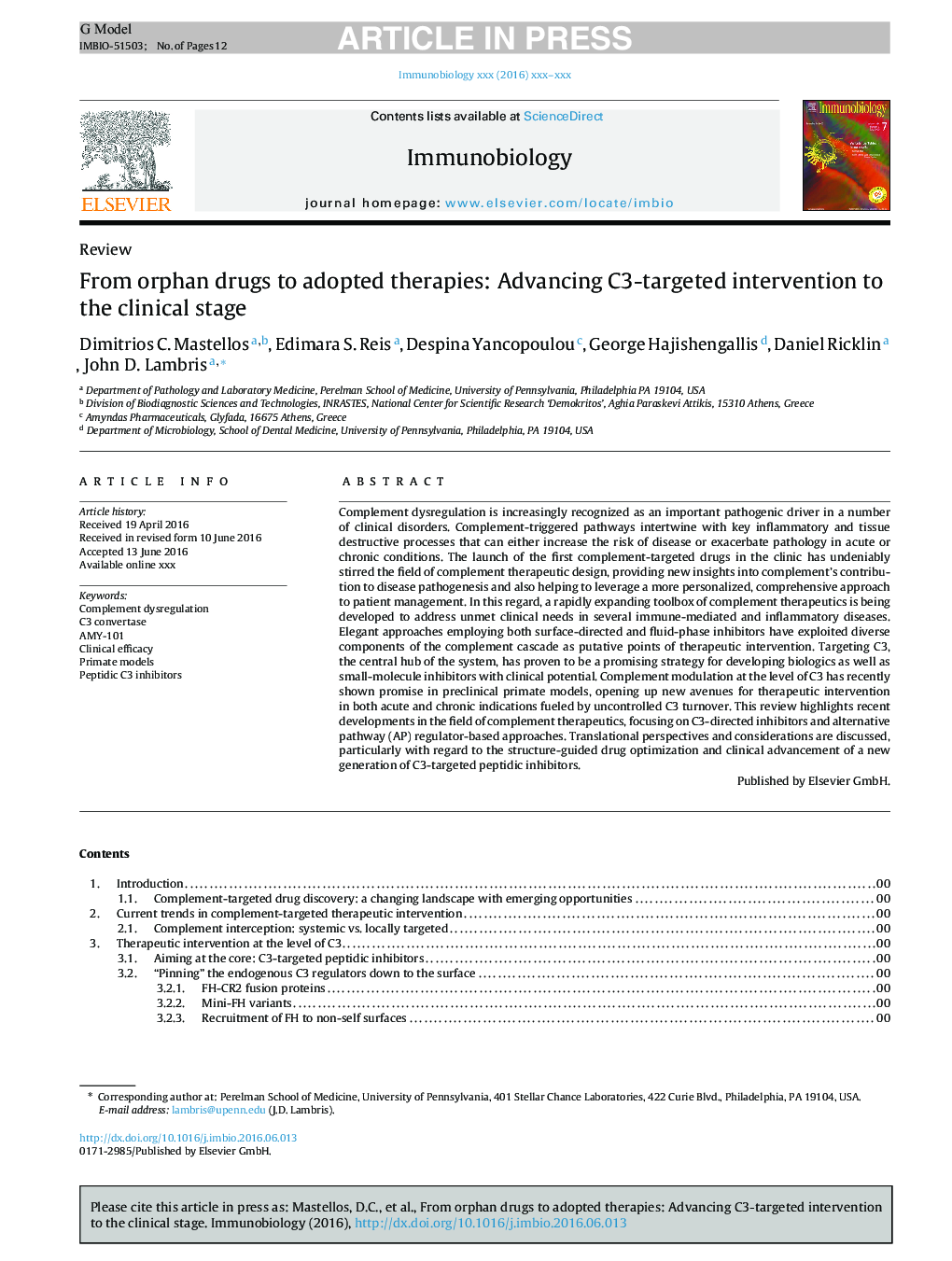| Article ID | Journal | Published Year | Pages | File Type |
|---|---|---|---|---|
| 10940667 | Immunobiology | 2016 | 12 Pages |
Abstract
Complement dysregulation is increasingly recognized as an important pathogenic driver in a number of clinical disorders. Complement-triggered pathways intertwine with key inflammatory and tissue destructive processes that can either increase the risk of disease or exacerbate pathology in acute or chronic conditions. The launch of the first complement-targeted drugs in the clinic has undeniably stirred the field of complement therapeutic design, providing new insights into complement's contribution to disease pathogenesis and also helping to leverage a more personalized, comprehensive approach to patient management. In this regard, a rapidly expanding toolbox of complement therapeutics is being developed to address unmet clinical needs in several immune-mediated and inflammatory diseases. Elegant approaches employing both surface-directed and fluid-phase inhibitors have exploited diverse components of the complement cascade as putative points of therapeutic intervention. Targeting C3, the central hub of the system, has proven to be a promising strategy for developing biologics as well as small-molecule inhibitors with clinical potential. Complement modulation at the level of C3 has recently shown promise in preclinical primate models, opening up new avenues for therapeutic intervention in both acute and chronic indications fueled by uncontrolled C3 turnover. This review highlights recent developments in the field of complement therapeutics, focusing on C3-directed inhibitors and alternative pathway (AP) regulator-based approaches. Translational perspectives and considerations are discussed, particularly with regard to the structure-guided drug optimization and clinical advancement of a new generation of C3-targeted peptidic inhibitors.
Related Topics
Life Sciences
Biochemistry, Genetics and Molecular Biology
Cell Biology
Authors
Dimitrios C. Mastellos, Edimara S. Reis, Despina Yancopoulou, George Hajishengallis, Daniel Ricklin, John D. Lambris,
